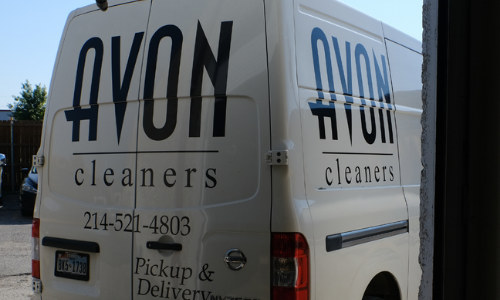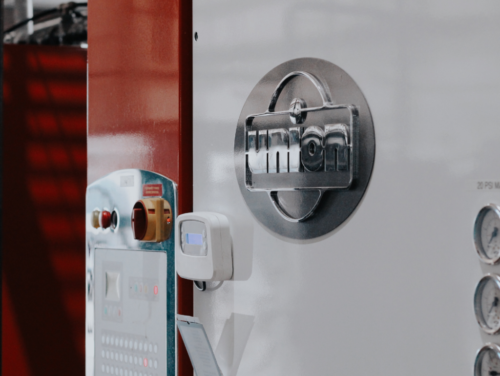How Does The Dry Cleaning Process Work?

Here in the United States, the dry cleaning process refers to cleaning clothes and fabrics by using a chemical solvent that contains little or no water. Through cleaning the surface of fabrics, the dry cleaning process does not penetrate the fibers of garments like water does in a regular washing machine.
Dry cleaning is typically used on clothes and certain fabrics that cannot be put in a standard home washer and dryer machine. This process preserves the desirable qualities of many fabrics and prevents shrinking and stretching. Along with this, several dry cleaners also offer wet cleaning for washable items like household linens and starched shirts.
Many people use dry cleaning services to ensure their clothes are well cleaned and treated prior to a big event or after they’ve gotten their most-loved clothes dirty. They often search “dry cleaner near me” to find a location that will be able to take good care of their clothes and return them in much better condition, without going out of their way. Keep reading to learn about how the dry cleaning process works.
Did You Know?
Dry cleaning has been around since Roman times when people would use ammonia to clean woolen togas to prevent any shrinking that happens when wool’s exposed to hot water. People were only prone to using harsh solvents such as carbon tetrachloride and trichlorethylene to clean garments.
Eventually, cleaners moved to petroleum-based solvents such as gasoline and kerosene which proved to be highly flammable and dangerous to use. Then, though a product called perchloroethylene, known as perc, became the product of choice. Not only was this product faster and safer to use, but it cleaned garments much better. Having perc as the main cleaning solvent opened up new opportunities for many dry cleaners. Now they could operate in smaller spaces with less equipment and could offer approximately 1 hour of cleaning services for clients.
Garment Tagging During The Dry Cleaning Process
When you take your clothing to the dry cleaners the first step is for the cleaners to tag your items. Every item becomes tagged with an identification number. Some cleaners use paper tags that become stapled or pinned to the garment. Others use an iron-on strip with a permanently assigned barcode for regular customers. Similar soiled garments from different customers undergo cleaning together and tagging ensures that your clothes become returned to you. This tag will remain on your clothing through the entire cleaning process.
The tag overall contains a great deal of important information. Such as, your name, clothing drop off date, date the clothing will be ready, as well as any information that may include the type of stain (such as a red wine stain or cake frosting stain) that may need different or special stain treatment.
Pre-Treatment Of Difficult Stains & Inspection
In this step, any difficult stains will be pre-treated, just like what you would do at home for a normal laundry load. The idea is to help eliminate the stain so that it will be easier for the dry cleaning chemicals and solvents to work to fully remove the stain. If you know the nature of the stain, then you can help in this process by doing a light stain treatment or simply blotting the stain to remove some of the substance.
NOTE: The earlier you act to pre-treat a stain the more chance you have to fully remove the stain.
Along with this, prior to cleaning the clothes, they’re inspected for items left in pockets, rips, tears, along with missing buttons. These items then become returned to customers and problems become noted as issues known before cleaning process.
Machine Dry Cleaning
Soiled clothes become loaded into a large drum machine which contains a stainless steel basket that holds the clean clothing with a water-free chemical solvent. The clothes become gently agitated in the solution which causes soils to loosen. Then, the solvent becomes drained, filtered, and recycled and the clothes undergo “rinsing” in a fresh solvent solution to flush away any last soil remains. After the cleaning solvent step is complete the clothing is spun rapidly to air dry. From here clothing becomes placed over coils to completely dry the garments.
Post Spotting During The Dry Cleaning Process
The entire dry cleaning process works very well when it comes to removing oil-based stains thanks to the chemical solvent being used. However, other types of stains are not always removed effectively. Accordingly, all garments are post spotted to look for remaining stains. The stains undergo treatment with steam, water, or even a vacuum to remove any remaining traces.
Remember, Avon does not spot-clean only. Spot-cleaning only will leave a stain mark where the stain was. The garment then has to be dry cleaned to blend out the fabric.
And Done!
Thus, after the clothing is post-spotted, the last step in the dry cleaning process is finishing. In this phase clothing undergoes pressing or steaming out any wrinkles, and repairs that need to become made on the garment such as reattaching buttons. Sometimes the clothing’s immersed in steam to remove any stiffness that might have occurred as a result of the dry cleaning process. Overall, the final step includes getting the garment ready to wear! The plastic bags provided are only there to help you get your clothes home without more stains. It’s important to take them off right away once you receive your garments.
At the conclusion of this step the article of clothing is officially declared finished and packaged to return to the client.


Contact Avon Today
Avon Dry Cleaners is proud to go green! Our eco-friendly dry cleaning methods are what sets us apart from other laundry services in the Park Cities, Uptown, and Dallas Fort-Worth metroplex near you. Match this service with our FREE pick up and delivery service. Contact us today to learn more about our dry cleaning service!
Also, feel free to take a look at our published blog post to learn more dry cleaning tips!




